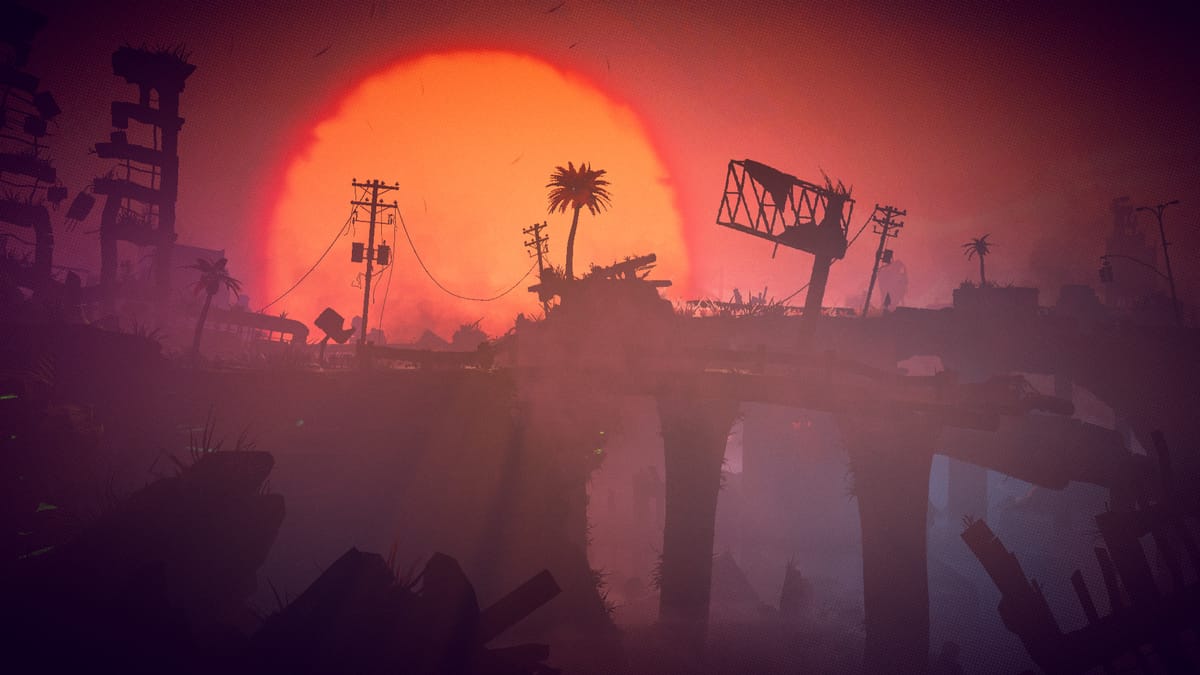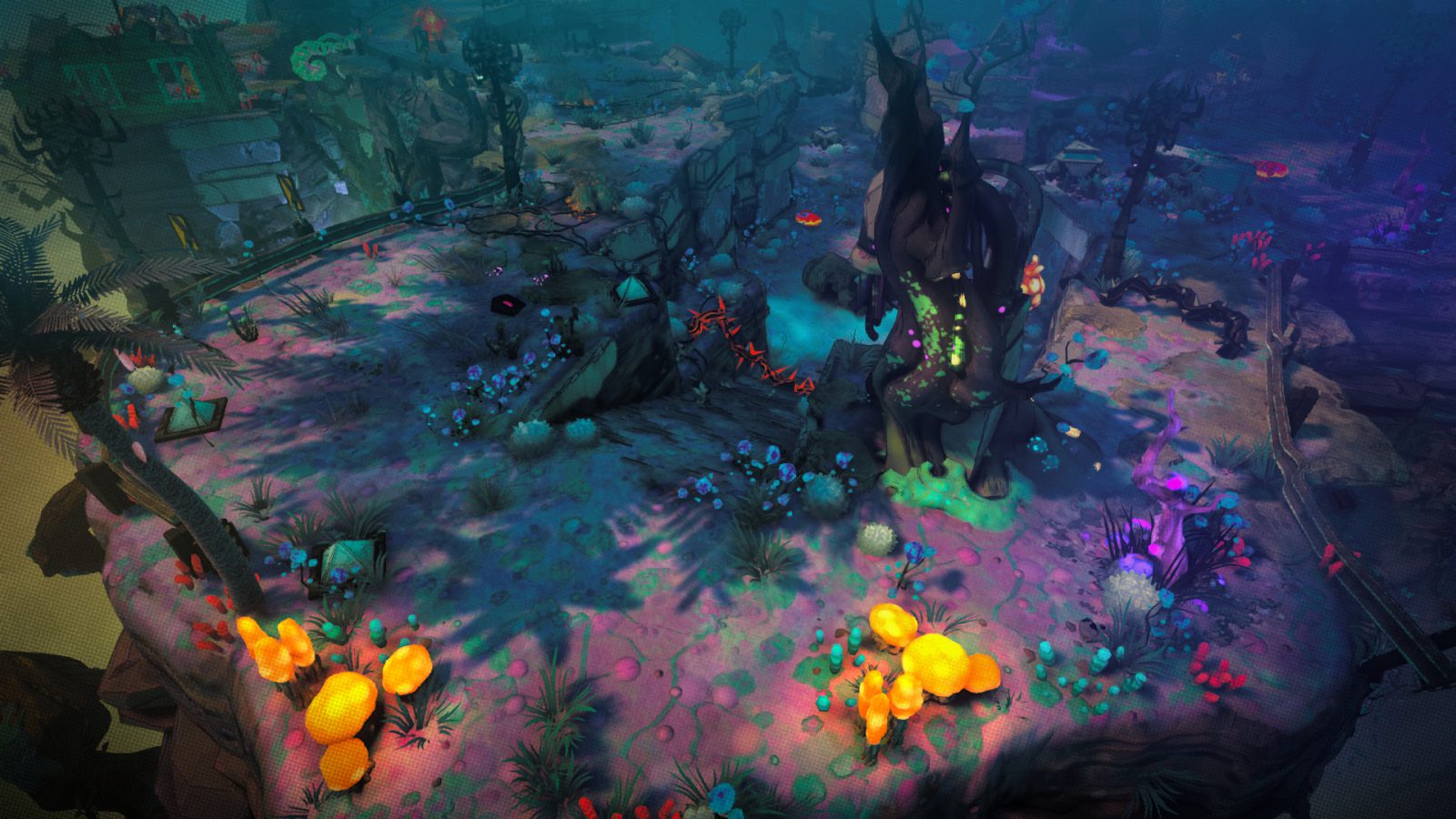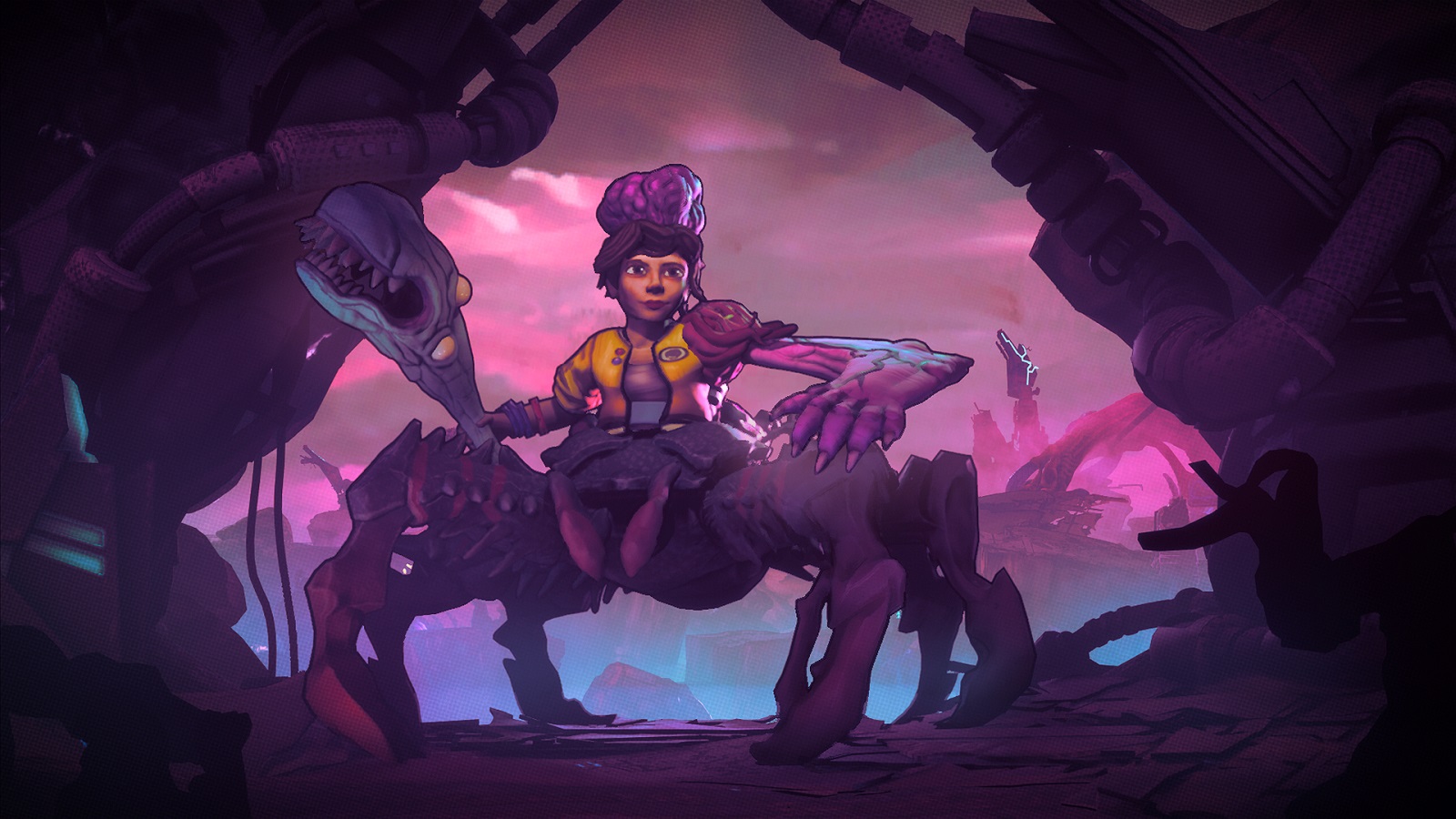
The gap between Rad’s potential and its reality is more saddening than the actual game. You see, this action roguelike from Double Fine Productions isn’t truly worthless, but every once in a while during gameplay you will see glimpses of the marvel that it might have been, and that moment will inevitably be one of profound disappointment; once every few hours or so you’ll get the right combinations of mutations, finding something new, and pulling off perfectly-timed maneuvers right in tune with your upgrades, you will feel a brief moment of real satisfaction. Then, slowly, that feeling will bleed away with the monotonous grind that makes up the rest of the game.
So let’s start with the good. Rad’s premise is post-post-apocalyptic, which is to say that after one apocalypse wrecked the Earth, scorching its surface until machines were the only viable form of life, another calamity took place that wrested control of the world away from them. Left behind are a small rabble of children who must cleanse the land of its taint, collecting radiation into themselves to fuel powerful mutations that grant them extra abilities. These children, the color pallette, and the soundtrack all make use of that 80s neon-synth aesthetic, which is surprisingly underused. Despite some punk character designs and glowing underbrush, there isn’t much until the later levels that really feels like the mutated hellscape that Rad could have portrayed. Worst of all is that many assets you’ll like the first time around will quickly lose their charm as you realize how much leverage Rad tries to get from them. Locations, enemies, and NPCs will be replicated throughout the game ad nauseam, until you find yourself starved for novelty. Later levels and bosses use base enemies with a size increase, and the barren hallways of the underground are far from inspired.

Rad’s story contains a mote of Double-Fine’s trademark wit, delivered to you via voice-over during gameplay. As you uncover new secrets, your ally at home base will lay out their context in the dead world, and how they contributed to its history. Some of these insights were obvious, but small flourishes added into the story made for a setting I hope to see more thoroughly explored in the future.
During gameplay, you venture forth with your baseball bat to do battle with various mutants, travelling the landscape to collect radiation and activate towers that lead to the boss room and subsequent levels. It takes much of its basic formula from similar roguelikes, where the landscape and abilities appear in new ways every run, with certain upgrades being carried through subsequent runs. What it doesn’t take from those roguelikes are some important qualities that make them worth returning to, which Rad does not posses.
While the core of the gameplay is simple, it’s made obtuse by the fact that Rad doesn’t feel much inclined to explain to the player how the game is played or what your goals are during gameplay. In the interests of exploration, that might strike you as a benefit, but the game doesn’t just hide how you progress, what certain features of the landscape do, and other such secrets that you might enjoy figuring out yourself. The basic controls are locked away not in menus or a tutorial but in loading screen tips which spawn randomly. Sure, you can figure some of these out on your own, but you will be frustrated at not knowing at least one of the following without being told: you have a secondary aerial attack which does less damage but triggers more quickly, you have a charge/spin attack available at all times, you have a dodge button which is completely essential to survival, etc.
Even the novelty of exploration wears off quickly, as you find just how little there really is to do and explore in subsequent playthroughs of Rad. There were two or three times when I was pleased at finding something I didn’t expect, until learning that those features were essential to progression and I would use them almost every run. Even gaining mutations became a bore, as they are slow to be acquired and many are lacking in excitement. Some are amazing while others feel like a penalty, as you get a minor situational bonus instead of one of the more useful abilities. Wings are an excellent example of what the game could have been. On acquiring them, your character’s back explodes with enormous appendages that launch you into the air and stagger enemies with a gust of wind. From there traversal becomes entirely different, and your attack strategy will change wildly. Other smaller buffs, like immunity to toxic or electric damage, are so minimal that you may see no use of them during a run.

These mutations also rarely turn the core combat into something interesting. Your basic moves will carry you through the game, as for the most part you do one thing: let an enemy wear out their attack, maneuver into a good position, get a few strikes off, and dodge out of the way. While that can be fun, the lethality of combat and rarity of healing items means there is one true strategy for success, if the mutations allow you to use it: kiting. By far the most effective tactic for survival is to run away from the enemies using ranged abilities or summoned mobs, taking as little part of the combat as possible yourself. The runs when I got the farthest kept me out of the most engaging part of the game, rather than pulling me into it.
Make no mistake, this game can be fun…for a while. You see, the game only really opens up once you have gotten deeper into it, stacking mutations and becoming a power-house as new enemy types challenge you to your maximum. Even when it gets to this point, you will find the experience lacking. There just isn’t that much to do, and the novelty of exploration wears thin as you realize how little there is to really experience under the surface.

I give Rad credit for one thing, though: its pricing. Released as a full $60 product, this would have been an insult. As a smaller project, coming in at $20, its lower ambition comes across as more reasonably grounded. Even so, with the Binding of Isaac, Nuclear Throne, and Enter the Gungeon available for around the same price, it would be difficult to see reaching for Rad and not its competitors. Each of these games has a novelty, a complexity, a longevity, and a vision that Rad falls short of, despite the merit it does bring to the table.
Rad
Mediocre
For a small asking price, Rad will reliably give you a few hours of novelty, as you explore the wasted punk-dystopia and mutate yourself to better clear the land of its inhabitants. Beyond that initial entry point, you will find yourself dogged by an experience that has little to offer in the way of depth or surprises. The core mechanics make for tense, hectic combat, but also encourage you not to engage in it.
Pros
- A stellar synth soundtrack
- Occasional bursts of brilliance
- A storyline with charm and creativity
Cons
- Repetition mars the experience at every turn
- Mutations and combat less than exciting
- Basic mechanics not explained to the player
